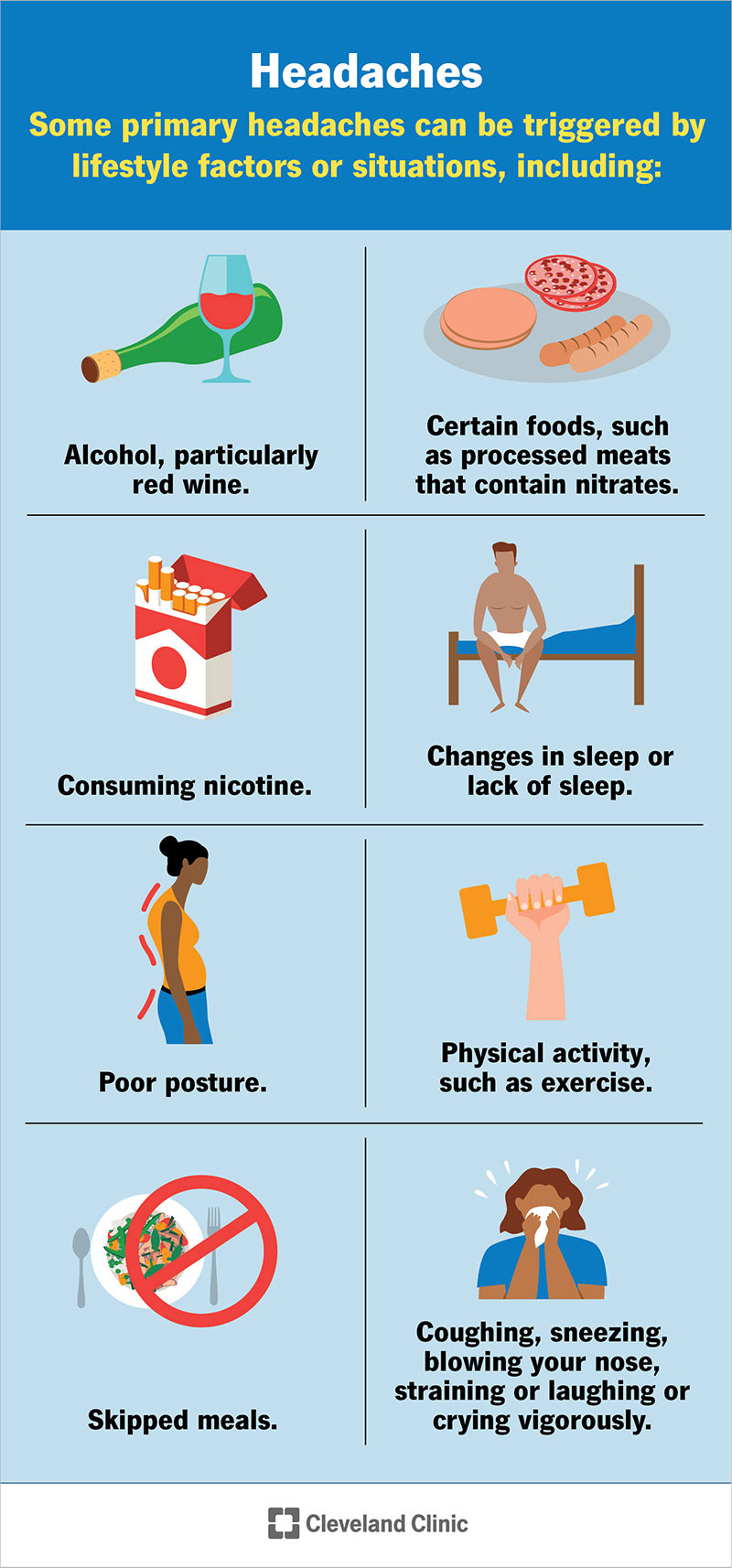Migraines are more than just bad headaches. They are complex, recurring, and often debilitating.
Understanding migraines can help manage their impact on life. Migraines affect millions worldwide, causing intense pain, nausea, and sensitivity to light. They come in various forms, each with its own triggers and symptoms. Knowing the types, causes, and symptoms of migraines can aid in finding effective treatments.
This blog aims to shed light on migraines, guiding you through their complexities. Whether you experience migraines or know someone who does, this information can be crucial. Let's explore what migraines are, their different types, what causes them, common symptoms, and available treatments. With the right knowledge, managing migraines becomes a bit easier.
Types Of Migraines
Migraines can be classified into several types, including migraine with aura and migraine without aura. Each type has different triggers and symptoms, affecting people differently. Understanding these differences helps in seeking the right treatment.
Migraines are more than just bad headaches. They come in different forms, each with unique features. Understanding the types can help in identifying and managing them better.Common Migraines
Common migraines, also known as migraines without aura, are the most frequent. They cause throbbing pain, often on one side of the head. This pain can last from a few hours to several days. Light, sound, and smells may worsen the pain. Nausea and vomiting are also common.Classic Migraines
Classic migraines, or migraines with aura, include visual or sensory disturbances. These disturbances happen before the headache starts. You might see flashing lights or zigzag lines. Some people experience temporary vision loss. Other symptoms can include numbness, tingling, or speech difficulties. The headache follows these auras and can be severe.Chronic Migraines
Chronic migraines occur more frequently. If you have headaches for 15 or more days a month, it may be chronic. At least eight of those headaches should have migraine features. Chronic migraines can greatly affect daily life. They may cause more disability than other types.Silent Migraines
Silent migraines, or acephalgic migraines, do not cause headache pain. They still include other migraine symptoms like aura, nausea, and sensitivity to light. Silent migraines can be confusing. You might experience all the discomfort without the actual headache. This type is less common but still disruptive. Understanding these types helps in managing migraines better. It can lead to more effective treatments and lifestyle adjustments.
Credit: dranimamishra.com
Migraine Causes
Migraines are a neurological condition that can be very painful. Understanding the causes of migraines can help in managing and preventing them. There are several factors that can trigger migraines, ranging from genetics to environmental influences. Below, we delve into the various causes of migraines.
Genetic Factors
Genetics play a significant role in the likelihood of experiencing migraines. If a close family member suffers from migraines, you are more likely to experience them too. This is because certain genes linked to migraines are often inherited.
Environmental Triggers
Various environmental factors can trigger migraines. These can include:
- Weather changes: Fluctuations in temperature and humidity can provoke migraines.
- Strong smells: Perfumes, chemicals, and smoke can act as triggers.
- Noise levels: Loud or persistent noises may lead to a migraine.
- Light sensitivity: Bright or flickering lights can also be a cause.
Hormonal Influences
Hormonal changes, particularly in women, can trigger migraines. These changes often occur due to:
- Menstrual cycle: Many women report migraines just before or during their periods.
- Pregnancy: Hormone levels fluctuate during pregnancy, causing migraines.
- Menopause: Hormonal shifts during menopause can also trigger migraines.
Hormonal medications, such as birth control pills, can affect migraine patterns too.
Dietary Triggers
What you eat and drink can also impact migraines. Common dietary triggers include:
- Alcohol: Red wine and other alcoholic beverages can cause migraines.
- Caffeine: Both too much and too little caffeine can trigger migraines.
- Food additives: Ingredients like MSG and artificial sweeteners are common triggers.
- Processed foods: Foods high in preservatives and additives can provoke migraines.
Keeping a food diary can help identify and avoid these triggers.
Migraine Symptoms
Migraine symptoms can be debilitating and affect daily life. Recognizing these symptoms can help in managing and seeking appropriate treatment. Here are some common migraine symptoms.
Headache Pain
The most common symptom is a severe headache. This pain usually occurs on one side of the head. It can feel like a throbbing or pulsing sensation. The pain can last from a few hours to several days.
Aura Symptoms
Some people experience aura symptoms before the headache starts. These include:
- Visual disturbances, such as seeing flashes of light or zigzag lines.
- Temporary vision loss in one eye.
- Speech difficulties.
Aura symptoms typically last for 20 to 60 minutes.
Sensory Sensitivities
During a migraine, many experience heightened sensitivity to:
- Light (photophobia).
- Sound (phonophobia).
- Smells (osmophobia).
These sensitivities can make it hard to be in well-lit or noisy environments.
Gastrointestinal Symptoms
Gastrointestinal issues can also accompany migraines. Common symptoms include:
- Nausea.
- Vomiting.
- Stomach pain.
These symptoms can further contribute to the discomfort experienced during a migraine attack.
Diagnosing Migraines
Diagnosing migraines can be a complex task. It involves several steps and tests. Understanding the process can help you manage and treat your migraines better. Here are the main steps doctors take to diagnose migraines.
Medical History
Doctors start with your medical history. They ask about your symptoms, frequency, and duration of headaches. You should share any family history of migraines or other headaches. This information helps identify patterns and triggers.
Doctors also want to know about your lifestyle. This includes your diet, sleep patterns, and stress levels. Each of these can impact migraine frequency and severity.
Neurological Exams
A neurological exam is the next step. This exam tests your reflexes, muscle strength, and coordination. Doctors also check your senses and mental status. This helps rule out other conditions that might cause headaches.
The exam can also identify any abnormal neurological signs. These signs could indicate a more serious issue that needs further testing.
Imaging Tests
Sometimes, doctors use imaging tests to get a clearer picture. Common tests include MRI and CT scans. These tests can rule out other causes of headaches like tumors or structural problems.
Imaging tests are not always necessary for diagnosing migraines. They are used if there are unusual symptoms or if the neurological exam finds something abnormal.
Diagnostic Criteria
Doctors use diagnostic criteria to confirm migraines. These criteria come from the International Headache Society. They include:
- Headaches lasting 4 to 72 hours
- Two or more of the following: unilateral location, pulsating quality, moderate or severe pain, aggravation by routine physical activity
- One or more of the following: nausea and/or vomiting, sensitivity to light and sound
Meeting these criteria helps doctors diagnose migraines accurately. This ensures you receive the right treatment.
Preventative Treatments
Preventative treatments for migraines focus on reducing the frequency and severity of attacks. These strategies can help improve quality of life. They include lifestyle changes, medications, alternative therapies, and dietary adjustments.
Lifestyle Changes
Simple lifestyle changes can make a big difference. Regular exercise, good sleep hygiene, and stress management are key. Exercise releases endorphins, which can reduce migraine frequency. Consistent sleep patterns help maintain stable brain function. Stress management techniques like yoga and meditation can also help.
Preventative Medications
Doctors may prescribe medications to prevent migraines. These include beta-blockers, antidepressants, and anticonvulsants. Beta-blockers like propranolol can reduce migraine frequency. Antidepressants like amitriptyline can help by stabilizing brain chemicals. Anticonvulsants like topiramate can also reduce migraine occurrences.
Alternative Therapies
Alternative therapies can complement traditional treatments. Acupuncture and biofeedback are popular options. Acupuncture involves inserting thin needles into the skin. This can help reduce migraine frequency. Biofeedback teaches you to control bodily functions. This can help manage stress and reduce migraines.
Dietary Adjustments
Diet can play a significant role in preventing migraines. Identify and avoid trigger foods. Common triggers include chocolate, caffeine, and alcohol. Keeping a food diary can help pinpoint specific triggers. Eating regular meals and staying hydrated are also important. A balanced diet supports overall brain health and can reduce migraines.
Acute Migraine Treatments
Acute migraine treatments aim to provide fast relief from debilitating symptoms. These treatments can vary widely, from medications to natural remedies. Understanding each option can help you find effective relief during an acute migraine attack.
Over-the-counter Medications
Over-the-counter (OTC) medications can be a first line of defense. Common options include ibuprofen and aspirin. These can help reduce pain and inflammation. Acetaminophen is another choice. It can ease pain but does not reduce inflammation.
Combination medications can also be effective. They often mix pain relievers with caffeine. Check with your doctor before starting any new medication. Proper dosage is crucial to avoid side effects.
Prescription Medications
Prescription medications can offer stronger relief. Triptans are a common choice. They help reduce inflammation and constrict blood vessels. Examples include sumatriptan and rizatriptan. These are often used when OTC options fail.
Ergotamines are another option. They can be effective for severe migraines. Anti-nausea medications can also be prescribed. They address symptoms like vomiting and nausea. Always consult your healthcare provider for the best treatment plan.
Natural Remedies
Natural remedies can complement traditional treatments. Some find relief using essential oils like peppermint. Applying a cold compress to the head can also help. Drinking plenty of water prevents dehydration, which can trigger migraines.
Herbal supplements like butterbur and feverfew are popular. Always consult your doctor before starting any new supplement. Lifestyle changes like regular sleep and reduced stress can also reduce migraine frequency.
Emergency Treatments
Emergency treatments are necessary for severe migraines. Hospital visits may be required for intravenous medications. These can provide rapid relief. Common options include triptans and anti-nausea drugs.
In some cases, steroids can be administered. They help reduce inflammation quickly. Oxygen therapy is another emergency option. It involves breathing in pure oxygen through a mask. This can help reduce headache intensity.
Living With Migraines
Migraines can be challenging. They affect daily life, work, and mental health. Learning to manage them is essential. Here are some strategies to help you live better with migraines.
Daily Management
Managing migraines daily involves understanding triggers and adopting healthy habits. Keep a diary to track your migraines. Note the time, symptoms, and possible triggers. This helps identify patterns.
Follow a consistent sleep schedule. Lack of sleep can trigger migraines. Eat regular, balanced meals. Avoid skipping meals as it may cause an attack.
- Stay hydrated by drinking plenty of water.
- Limit caffeine and alcohol intake.
- Practice stress-relief techniques like yoga or meditation.
Workplace Strategies
Working with migraines can be tough. Inform your employer about your condition. This helps in creating a supportive work environment.
Make your workspace migraine-friendly. Ensure proper lighting and reduce screen glare. Take regular breaks to rest your eyes and stretch.
Have a quiet space to retreat if a migraine strikes. Use noise-canceling headphones if noise is a trigger. Keep necessary medications handy.
Support Systems
Having a support system is crucial. Family and friends can offer emotional support. Educate them about your condition. This helps them understand what you go through.
Join a migraine support group. Share experiences and coping strategies. Online forums and local groups provide a sense of community.
Seek professional help if needed. A therapist can help you manage the emotional impact of migraines.
Mental Health Considerations
Migraines can affect mental health. They may cause anxiety, depression, or stress. Addressing these issues is important for overall well-being.
Practice relaxation techniques. Deep breathing exercises can reduce stress. Engage in hobbies that you enjoy. This distracts from pain and improves mood.
Do not hesitate to seek professional help. Therapy can provide coping strategies. Medication might also be necessary. Discuss with your healthcare provider.

Credit: psrihospital.com
Future Of Migraine Treatment
The future of migraine treatment is bright and promising. New therapies and research aim to improve the lives of many. This section explores the innovative therapies, ongoing research, patient advocacy, and technology advances shaping migraine care.
Innovative Therapies
Exciting new treatments are on the horizon for migraine sufferers. These innovative therapies target the root causes of migraines. Examples include:
- CGRP Inhibitors: These drugs block a protein linked to migraine pain.
- Neuromodulation Devices: Wearable gadgets that alter nerve activity.
- Botox: Injections that reduce chronic migraine frequency.
Ongoing Research
Scientists continue to uncover new information about migraines. Ongoing research focuses on:
- Genetic Factors: Identifying genes that make people prone to migraines.
- Brain Imaging: Using advanced scans to see how migraines affect the brain.
- Preventive Medications: Developing drugs to stop migraines before they start.
Patient Advocacy
Patient advocacy plays a key role in migraine treatment. Advocacy efforts include:
| Effort | Impact |
|---|---|
| Support Groups | Provide community and shared experiences. |
| Awareness Campaigns | Educate the public and reduce stigma. |
| Policy Change | Push for better healthcare coverage. |
Technology Advances
Technology is revolutionizing migraine care. Key advancements include:
- Mobile Apps: Track and manage migraine triggers.
- Telemedicine: Access specialists from the comfort of home.
- AI Diagnostics: Use artificial intelligence for early detection.

Credit: my.clevelandclinic.org
Frequently Asked Questions
What Is A Migraine?
A migraine is a type of headache characterized by intense, throbbing pain. It often affects one side of the head. Symptoms can include nausea, vomiting, and sensitivity to light and sound.
What Are The Types Of Migraines?
There are several types of migraines, including migraine with aura, migraine without aura, chronic migraine, and menstrual migraine. Each type has unique symptoms and triggers.
What Causes Migraines?
Migraines are caused by a combination of genetic, environmental, and neurological factors. Common triggers include stress, certain foods, hormonal changes, and environmental factors like bright lights or strong smells.
What Are Common Migraine Symptoms?
Common migraine symptoms include severe headache, nausea, vomiting, and sensitivity to light and sound. Some people also experience visual disturbances or auras before the headache starts.
Conclusion
Understanding migraines is essential for managing them effectively. Different types of migraines exist. Each with unique triggers and symptoms. Treatments can vary but often include medication and lifestyle changes. Early diagnosis can help control symptoms better. Regular check-ups with your doctor are important.
Stay informed about your condition. Managing migraines requires patience and persistence. Always seek professional medical advice when needed. Your health matters. Keep striving for a migraine-free life.






